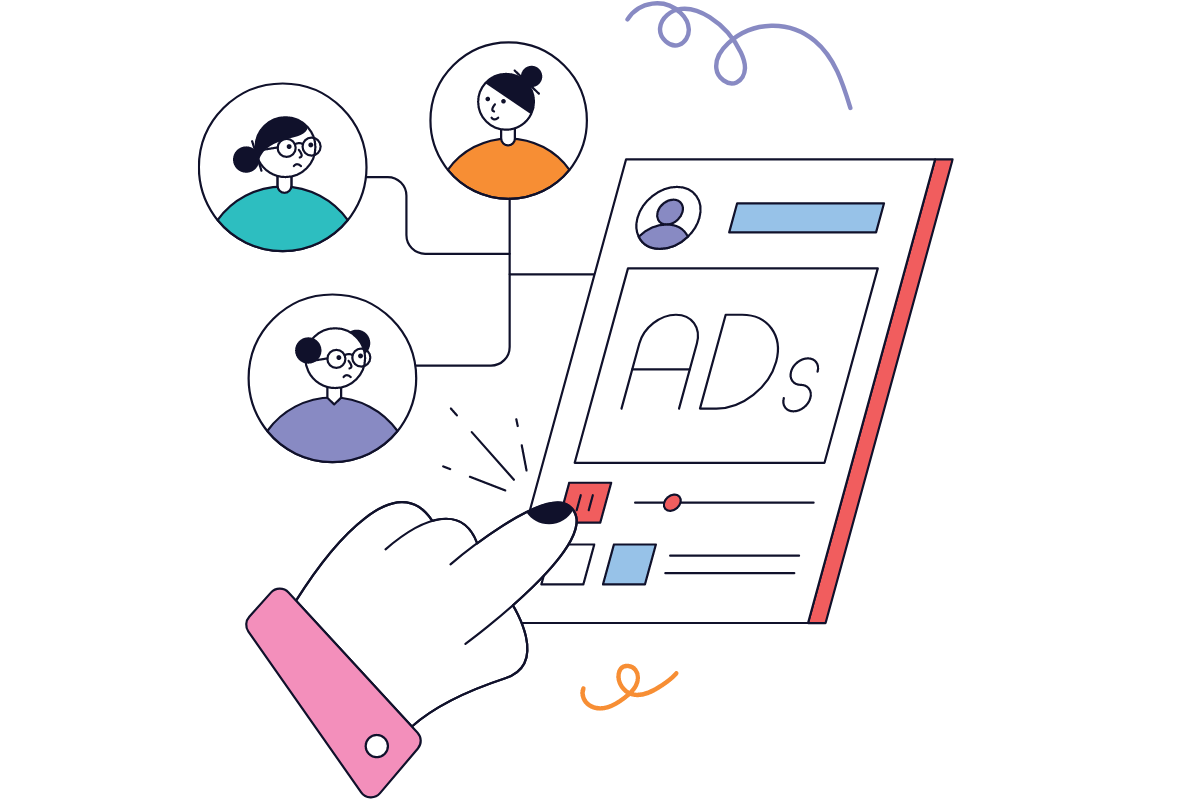When it comes to capturing the attention of modern audiences, advertisers are constantly seeking innovative ways to stand out in a sea of distractions.
With the rise of native ads era, marketers have discovered a fresh approach to seamlessly integrating promotional messages within the context of a user’s browsing experience.
In this article, we delve into the realm of dynamic and still advertisement, examining the unique advantages and effectiveness of each style.
Post Contents
- 1 Revolutionizing Engagement: The World Of Dynamic Ads
- 2 The Art of Stillness: Unleashing The Potential of Static Ads
- 3 The Perfect Blend: Harnessing the Synergy of Dynamic and Still Ads
- 4 The Power Of Seamless Integration
- 5 The Effectiveness Of Blending Dynamic And Stationary Elements In Integrated Promotional Content
- 6 Capturing Attention In The Digital Age: The Battle Between Movement and Stillness
- 7 Comparing The Impact And Engagement Levels Of Animated And Non-animated Content In Digital Marketing
Revolutionizing Engagement: The World Of Dynamic Ads
Imagine browsing your favorite website and suddenly, a vibrant and eye-catching ad comes to life before your eyes.
These dynamic ads, utilizing captivating motion graphics and interactive elements, have the power to captivate audiences unlike any traditional static advertisement ever could.
Picture this: an animated banner ad inviting you to explore the immersive world of a new video game, with characters and scenes seamlessly transitioning in a visually stunning display. Such dynamic ads have the ability to evoke emotions, create a compelling narrative, and leave a lasting impression.
The Art of Stillness: Unleashing The Potential of Static Ads
While dynamic ads may steal the spotlight with their flashy visuals, the power of stillness should never be underestimated.

Static advertisements, with their carefully curated visuals and concise messages, can tell a story in a single frame.
Think about a thought-provoking magazine print ad showcasing the luxury of a high-end fashion brand. Through the use of masterful photography, elegant typography, and a minimalistic design, the essence of exclusivity and desirability is conveyed.
The absence of motion allows the viewer to immerse themselves in the details and nuances of the advertisement, creating a sense of timeless elegance.
The Perfect Blend: Harnessing the Synergy of Dynamic and Still Ads
Ultimately, the key lies in finding the right balance between motion and stillness to effectively communicate a message and engage target audiences.
Combining the captivating qualities of dynamic ads with the artistic finesse of static ads can create a truly unforgettable experience.
Picturing a digital ad campaign that initially catches attention with a fascinating animated sequence and then transitions seamlessly into a visually striking still image, allowing the viewer to soak in the details and absorb the brand’s message. The marriage of motion and stillness creates intrigue, enhances comprehension, and maximizes brand recall.
In conclusion, the realm of native advertising offers advertisers a myriad of innovative techniques to effectively engage and captivate audiences.
Whether it’s the dynamic energy of motion or the timeless elegance of stillness, each style possesses its own unique advantages in the pursuit of conveying a compelling message.
By carefully considering the intended impact and merging the strengths of both dynamic and still ads, marketers can achieve unparalleled success in making their brand shine amidst the noise.
The Power Of Seamless Integration
When it comes to advertising, one of the most effective strategies is blending seamlessly into the surrounding content.
These ads have the ability to merge with the user experience, capturing attention and delivering messages in an organic and non-intrusive way.
By effortlessly integrating with the platform and format they appear in, these ads become almost indistinguishable from the surrounding content.
This integration allows them to reach users who may have developed “banner blindness,” a phenomenon where traditional ads are ignored or dismissed due to their repetitive and disruptive nature.
The key to the power of blending in lies in evoking a sense of credibility and trust. Native ads have the ability to establish an inherent connection with the audience by aligning with the tone, style, and context of the content they are displayed alongside.
Rather than appearing as an obvious promotional message, they seamlessly become a part of the user’s browsing experience.
Furthermore, these ads can offer great flexibility in terms of motion and interactivity, enhancing the overall user experience.
By utilizing animation, video, or interactive elements, native ads can engage and captivate users while still maintaining their seamless integration.
In contrast to static ads, which rely solely on visual elements, native ads leverage the power of context and relevance.
Instead of interrupting the user’s flow, they provide valuable information and entertainment within the natural progression of their browsing journey.
As advertisers continue to seek innovative ways to capture and retain audience attention, native ads prove to be a formidable strategy.
The power of blending in allows them to cut through the noise, establish trust, and deliver messages in a way that feels natural and authentic to the user.
The Effectiveness Of Blending Dynamic And Stationary Elements In Integrated Promotional Content
When it comes to generating maximum impact and engagement, the art of seamlessly merging dynamic and stationary components within integrated promotional content has proven to be a highly effective strategy.

By combining the power of movement with the visual stability of static elements, advertisers can captivate audiences, while maintaining brand recognition and message retention.
In today’s fast-paced digital landscape, where consumers are constantly bombarded with stimuli, incorporating motion into native advertising can help grab and maintain attention.
The introduction of animated elements provides a sense of novelty and dynamism, enticing viewers to explore further.
Moreover, the strategic placement of these dynamic elements within a cohesive layout ensures that they enhance rather than distract from the overall user experience.
However, it is crucial to strike a delicate balance between motion and stillness. While movement can heighten engagement, an excessive amount can overwhelm and alienate the audience, leading to a negative perception of the promotional content.
This is where stationary components play a vital role. By intertwining static visuals, such as brand logos and product images, with dynamic elements, advertisers create a harmonious blend that effectively communicates the intended message without overwhelming or distracting the viewer.
An additional advantage of integrating motion and stationary elements is the ability to reinforce brand recognition.
By incorporating consistent visual cues in native advertising, marketers enhance the memorability of their campaigns.
The repetition of distinct brand colors, fonts or visual motifs within both dynamic and static elements helps create a unified and memorable brand identity.
Through this harmonious unity, marketers can reinforce brand recall and establish a lasting impression on their target audience.
In conclusion, the strategic combination of dynamic and stationary elements in native advertising has proven to be a potent approach for maximizing engagement and recall.
By seamlessly blending motion and stillness, advertisers can harness the benefits of novelty, attention-grabbing, and brand reinforcement.
Balancing these elements in an integrated manner allows for the creation of captivating content that both captures attention and effectively communicates the desired message.
Capturing Attention In The Digital Age: The Battle Between Movement and Stillness
In the ever-evolving landscape of digital advertising, the competition to capture the attention of audiences is fierce.
This battle between movement and stillness has emerged as a crucial element in the success of online advertisements.
While motion ads utilize dynamic visuals and animations to catch the eye, static ads rely on static imagery and text to convey their message.
| Motion Ads | Static Ads |
| With motion ads, advertisers have the ability to create captivating experiences that engage viewers in a dynamic way. Through the use of videos, GIFs, and interactive elements, motion ads can deliver a powerful message that grabs attention and leaves a lasting impression. By leveraging movement and motion, advertisers can tell a story and evoke emotions, ultimately driving higher engagement and conversion rates. | Static ads, on the other hand, rely on still visuals to convey their message. They offer a more controlled and focused approach, allowing advertisers to carefully craft their content within the limitations of a single image. While lacking the dynamism of motion ads, static ads can still be highly effective when designed creatively. By leveraging strong visual compositions, compelling copy, and clever design, static ads can captivate audiences and deliver a clear and concise message. |
When it comes to choosing between motion and static ads, it ultimately depends on the specific goals and target audience of an advertising campaign.
Both approaches have their strengths and weaknesses, and the decision should be made based on the desired impact and the nature of the product or service being promoted.
While motion ads may excel at grabbing attention and creating an immersive experience, they can also be perceived as intrusive or distracting.
On the other hand, static ads offer a more subtle and seamless integration into the user experience. They are less likely to disrupt the browsing experience and can blend in more naturally with the surrounding content.
Ultimately, the battle between motion and static ads in the digital age is all about finding the right balance.
Brands and advertisers must carefully consider their target audience, campaign objectives, and the context in which the ads will be displayed.
By understanding the unique strengths and limitations of each approach, advertisers can create compelling and attention-grabbing campaigns that resonate with their audiences in the ever-evolving digital landscape.
Comparing The Impact And Engagement Levels Of Animated And Non-animated Content In Digital Marketing
In today’s digital advertising landscape, there is an ongoing debate surrounding the effectiveness of different types of content, particularly when it comes to motion and still visuals.

This section aims to delve into the comparison between motion-based and static advertisements, exploring their impact and engagement levels amongst the target audience.
1. Visual Appeal
One key aspect of any ad campaign is its ability to capture and hold the attention of its audience.
Animated content, with its dynamic and eye-catching nature, tends to resonate more with viewers, as it has the potential to create a sense of excitement and curiosity.
On the other hand, static visuals rely on visually appealing imagery or design to captivate the audience.
2. Emotional Connectio
Motion-based ads have the advantage of utilizing movement to convey a story or evoke specific emotions.
The use of animation or video can effectively create a narrative that resonates with the audience, making it easier for them to forge an emotional connection with the brand or product.
Static ads, although limited in terms of storytelling, can still evoke emotions through powerful imagery or clever copywriting.
3. Message Clarity
When it comes to delivering a clear message, static ads have the advantage of simplicity.
The lack of movement allows viewers to focus on the key elements without any distractions, making it easier for them to understand the intended message.
On the other hand, motion-based ads may face the challenge of balancing visual stimulation with the need for clear communication, as too much movement can sometimes overwhelm or confuse the audience.
4. Engagement And Memorability
Animated ads often have higher engagement levels due to their ability to captivate and entertain the audience.
Dynamic visuals tend to leave a lasting impression and are more likely to be shared or talked about, increasing their potential reach.
However, static ads can still be memorable if they utilize clever imagery, visual metaphors, or powerful calls-to-action.
5. Adaptability And Practicality
While motion-based ads offer a range of creative possibilities, they may require more time, resources, and technical expertise to produce.
Static ads, on the other hand, are generally easier to create and can be more adaptable for different platforms or advertising formats.
In conclusion, both animated and static content have their strengths and weaknesses when it comes to impact and engagement in digital advertising.
The choice between motion and still visuals ultimately depends on the specific campaign objectives, target audience, and the desired message delivery.
A well-crafted advertising strategy should consider the strengths of both options and utilize them accordingly to create a comprehensive and effective ad campaign.






























